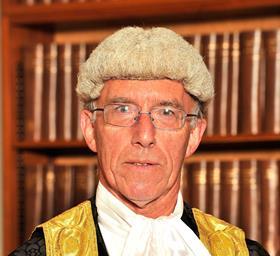The Court of Appeal has upheld a conditional fee agreement entered into because legal aid had run out – even though the legal aid certificate had not been formally discharged.
In Hyde v Milton Keynes NHS Foundation Trust [2017] EWCA Civ 399 yesterday, Lord Justice Davis found that there was no period of time when the claimant solicitors, Ashon KCJ, were being paid both under the CFA, and by legal aid.
Davis LJ said he agreed with the submissions of Roger Mallalieu, barrister for the claimant firm, and with Soole J’s earlier ruling, ‘that so far as the claimant and the solicitors were concerned there was in truth, given the facts and circumstances, no concurrency.

‘There was no period of time when, with regard to the services being provided to the client, the solicitors could, let alone did, take payment both under the private retainer constituted by the CFA and under the (undischarged) funding certificate.’
Ashton KCJ had brought a clinical negligence claim on behalf of its client with the benefit of legal aid. Liability was agreed, but as the dispute over quantum continued, the former Legal Services Commission declined to increase funding.
The client therefore signed a CFA with her solicitors, but the firm did not apply for a notice of discharge ‘burial certificate’ from the commission.
The NHS trust had argued that where a client is receiving public funding, their solicitor cannot take any other payment – in order to prevent ‘topping up’ of funding. Davis LJ said the trust had ‘readily accepted that in the present case there was no intention whatsoever on the part of the solicitors (or claimant) that there would or might be such topping up’.
However, he said the trust had argued that ‘the absence of discharge of the funding certificate created a risk of such topping up on the part of Ashton KCJ: because the funding certificate continued to be in place in that period after the CFA was made… and the CFA was accordingly required to be treated as unlawful and unenforceable. On this argument, therefore, the prior discharge of the funding certificate was an essential pre-requisite to the enforceability of the CFA.’
Davis LJ rejected this argument, stating that the CFA had for all purposes replaced the public funding.
‘The crucial fact was not, in my view, the solicitors’ own assessment that the work thus far done had reached, or was approaching, the limit set by the LSC. That would not of itself cause the certificate to be spent.'
‘That however, was simply the motivation for, and reason for, the crucial fact: namely the entering into the CFA. The absence of a certificate of discharge, in such circumstances, was evidential: not conclusive.'
He concluded: ‘It is quite plain, as the costs judge found on the facts of this case, that the CFA was designed and understood entirely to supersede for all purposes the public funding of the claim. There was no prospect of topping up in such circumstances.’


























3 Readers' comments